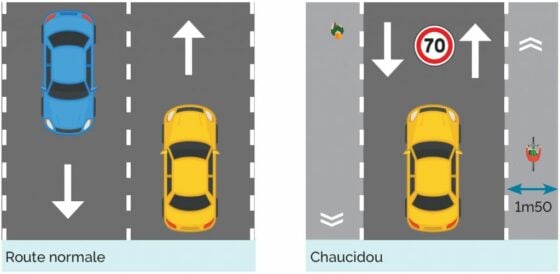
Increasingly popular in rural areas, the chaucidous allow motorists, cyclists and even pedestrians to coexist as best they can on relatively narrow traffic axes. Light up a device that deserves fame.
Etymologically it is a contraction word, contraction of roads and soft traffic. A chaucidou consists of a two-way lane, for use by motorists, bordered by two small side lanes reserved for cyclists and pedestrians. The advantage for the cyclist is that he can reserve a lane for him in both driving directions, without having to worry that a vehicle will hit him from behind. After all, the regulatory distance of 1m50 is amply respected as soon as a car in this configuration overtakes a cyclist.
Be careful when two cars cross each other because that’s where it gets complicated. They must then each move to the right lane, make sure that there are clearly no cyclists or pedestrians, or give them systematic right of way. As a result, it can become quite a dangerous traffic axis if you are not careful.
In theory, a chaucidou can be set up on axes that are already particularly frequented by cyclists and pedestrians, at least 4m50 wide and with fairly limited car traffic. Note that on a chaucidou the speed is limited to 70 km/h for cars.
If the concept is still recent in France, it has already proven itself in the Netherlands or Denmark for years.
(ETX Daily Up)